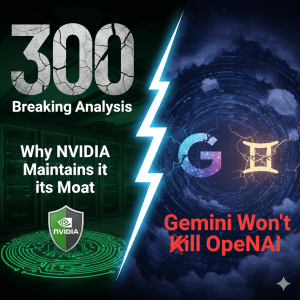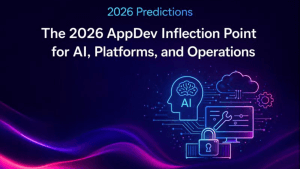As we approach RSA Conference 2025, the security industry stands at a critical inflection point. Enterprises face unprecedented complexity driven by cloud-native architectures, multi-cloud deployments, and AI-driven innovation. This evolution isn’t merely technical—it’s operational and strategic. I am seeing this transformative shift that I call “The Big Security Replatforming Movement.”
Through my extensive conversations with CISOs, enterprise buyers, and industry experts, a consistent narrative emerges: modern security stacks have become unsustainably complex, spurring a powerful wave of consolidation. The era of chasing best-of-breed tools is being replaced by a pragmatic push toward integrated platforms that promise reduced risk, simplified operations, and scalable security.
Key Drivers of the Security Replatforming Movement
1. Multi-Cloud Security Is Now a Mandate
Cloud security, particularly in multi-cloud environments, remains paramount. As enterprises increasingly adopt Supercloud (cross-cloud) models, distributed applications, and decentralized compute architectures, security teams face a sprawling threat surface. Protecting this dynamic landscape is now the highest strategic priority at the board level.
2. Practical Automation: Agents Overtake General AI Hype
While generative AI and other advanced AI solutions are still predominantly in the experimental stage—or what we refer to as “POC purgatory”—practical, agent-based automation has swiftly gained traction. CISOs favor agents due to their tangible benefits in task automation, efficiency gains, and resilience enhancement.
In fact, over the past 8 months my research shows that 7 out of 10 CISOs are currently or in process of deploying agent-based initiatives, and 90% anticipate that agents will become integral to their security stacks. The scope of those agents are very practical in nature not for their novelty, but for their ability to automate tasks, reduce headcount dependencies, and align with resilience goals.
3. Consolidation Accelerates: Platforms Emerge as Central Anchors
The market is experiencing significant fatigue from best-of-breed solutions. Integration challenges and operational complexity, rather than budget constraints, are driving enterprises toward consolidation. Security leaders express a clear preference for platforms that provide seamless integration and simplified management. A prevailing sentiment among CISOs is succinctly summarized by a CISO friend who said to me “We don’t need new tools. We need fewer tools that work better together.”
Platforms like CrowdStrike, Zscaler, and Wiz are rising as foundational anchors, driving ecosystem growth around their integrated offerings. Enterprises are telling us loud and clear: unless a new vendor offers a step-function improvement, they’re not interested.
4. Security for Generative AI: Interest High, Adoption Slow
Security solutions tailored specifically for Generative AI and Large Language Models (LLMs) are attracting considerable attention, yet adoption remains measured. The slow deployment is not due to a lack of interest, but rather the stringent resilience requirements for AI-driven security. Areas gaining attention include app-layer protections, such as Web App Security and Enterprise Browser Security, addressing emerging threats like prompt injections.
Top Enterprise Investment Priorities
Enterprises have clearly prioritized their security investments around several key domains:
- Vulnerability Management & Prioritization
- Identity and Access Management (IAM/NHIM)
- Cloud Security Posture Management (CSPM)
- Endpoint & Device Security
- Security Data Management (CAASM)
- Threat Exposure Management
- Observability Security & SIEM
- Network Security (both decentralized and traditional)
- Web Application & API Security
- DevSecOps and Developer Tooling Security
Additional Emerging Trends
Authentication Landscape: Moving Toward Passwordless
While multi-factor authentication (MFA) remains essential, passwordless methods guided by standards are rapidly mainstreaming, signaling a substantial shift away from legacy, password-based authentication.
Zero Trust: Popular but Incomplete
Zero Trust principles are widely adopted conceptually, yet comprehensive implementations remain uncommon. Only around a quarter of enterprises achieve end-to-end Zero Trust integration, highlighting ongoing gaps in consistency, visibility, and user experience.
Human Risks: Social Engineering and Data Mishandling
Today’s primary security threats increasingly stem from internal human errors and sophisticated social engineering attacks, emphasizing the critical role of workforce training, role-based access controls, and data loss prevention (DLP).
Market Leaders and Innovators
Security professionals consistently identify certain vendors as critical to their future security strategies:
- Platform Leaders: Microsoft, Palo Alto Networks, CrowdStrike, Cisco, Fortinet, Zscaler, SentinelOne, Wiz, Okta
- Rising Stars: Arctic Wolf, Netskope, Threadlocker, Abnormal Security, Snyk
- Core Players: Cloudflare, Sophos, Rapid7, AWS, IBM, Check Point, Proofpoint, Splunk, CyberArk, Tenable, Trellix
The Replatforming Movement: A Long-Term Strategic Shift
From my standpoint this shift towards replatforming security is not temporary—it’s a fundamental, strategic pivot redefining how enterprises approach cybersecurity operations. Expect this conversattion to dominate for the rest of 2025 and into 2026. RSA Conference 2025 will serve as a critical proving ground for vendors, compelling them to demonstrate genuine, integration-ready solutions rather than mere promises.
We at theCUBE Research will closely follow these developments, providing real-time insights, analysis, and commentary directly from the conference floor in San Francisco. Stay tuned as we spotlight the leaders, identify the challengers, and separate the innovators from the pretenders in this transformative movement.
– John Furrier | theCUBE Research


